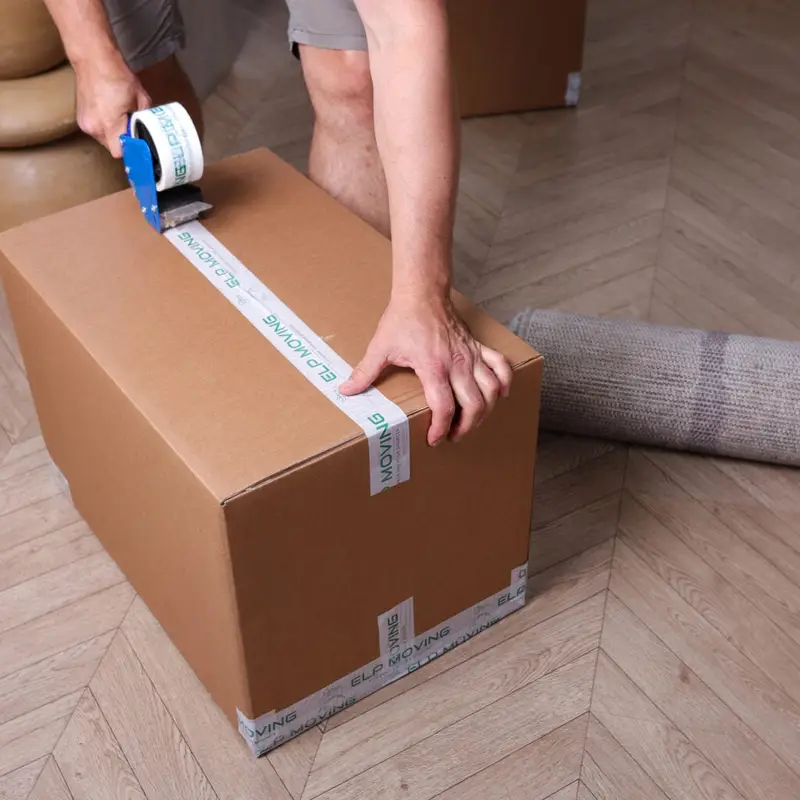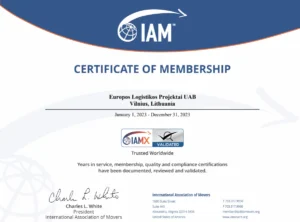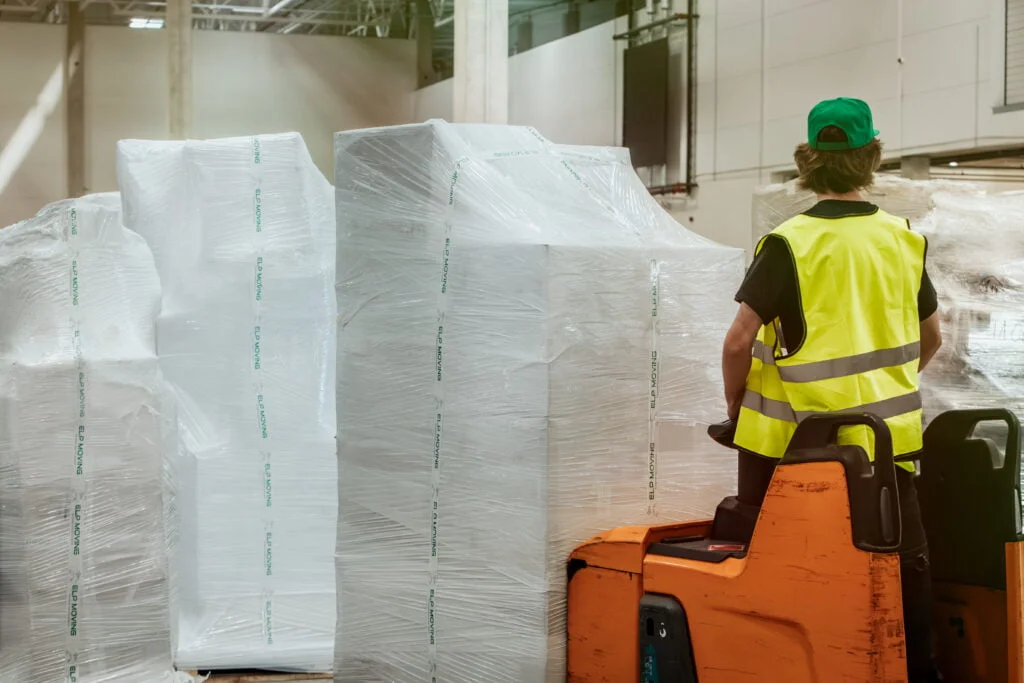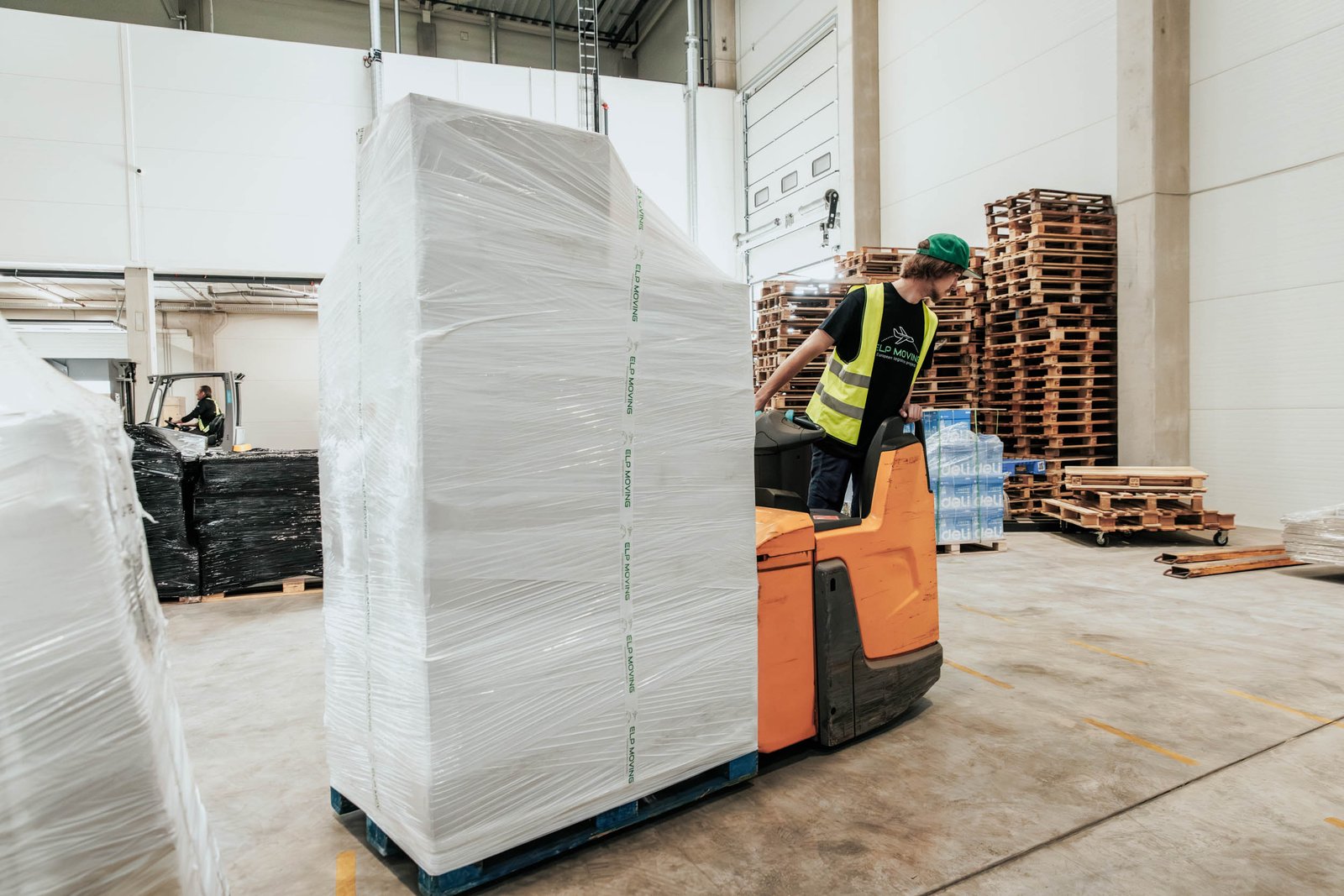
Planning to move abroad?
We will arrange a comfortable and safe move for you to a new place with transportation of all your personal belongings
Estimate the volume of your move
When it comes to international removals and relocation, knowing the volume of your items is crucial for organizing your move and planning the size of the vehicle needed for transportation. In addition, we base our quotes on the volume in cubic meters (m3) to be transported, so it’s essential to have an accurate estimation of the load.
A quick trick to calculate the total volume
The most common question we ask is how much stuff needs to be transported? While there’s usually no definitive answer, but quick trick can give you an estimate of your inventory’s volume:
To calculate the volume, you can take the surface area of your current apartment and divide it by two. For instance, if you live in a 60m2 home, the average volume of furniture and boxes would be around 30m3.

It’s important to keep in mind that this method only provides a rough estimate of the volume to be transported. You’ll need a more detailed inventory assessment to get an accurate moving quote and to determine the size of the vehicle needed for your move.
Calculate the volume of a single piece of furniture
If you’re wondering how to calculate the volume of a piece of furniture in m3, here’s the formula to follow: length x width x height = volume. By multiplying these three measurements, you’ll get the volume in cubic meters.
When it comes to moving day, it’s essential to know the exact measurements of your furniture to ensure it will fit in the van or a truck. Therefore, it’s recommended to take precise measurements beforehand, especially for larger items.
How to calculate the volume of boxes
The general rule of thumb is that ten standard-sized boxes, which typically measure 60x40x40cm, are equal to 1m3 of volume. These boxes are usually stacked on euro pallets in sets of 20, and the typical load for one euro pallet is up to 300kgs. A fully stacked pallet itself measures at 120x80x200cm.
On average, you can expect to need around 30 boxes per person for your move. However, this number can vary depending on how many belongings you have. If you tend to hold onto a lot of things, you might need up to 35-40 boxes per person. On the other hand, if you’re a minimalist, you may only need around 20 boxes per person.
For example, if you and one other person live in a three and a half room apartment, you can anticipate needing to transport around 60 boxes, which amounts to 6m3 of volume or three euro pallets.

Estimate the volume of your studio (30m2) move
If you’re moving from a studio apartment and need to estimate the volume of your belongings, we can help you out. Here’s what you can expect in terms of the volume of boxes and furniture:
Estimation of the volume in boxes:
On average, you’ll have between 20 and 30 boxes to move, which equates to 2-3 m3 of boxes. Unless you have a lot of items stored in a basement, it’s rare to have more than 30 boxes when moving alone from a studio. Here’s a breakdown of what you can expect for the number of boxes in each category:
The general rule of thumb
- Kitchen items: 3-5 boxes
- Clothes: 4-8 boxes
- Documents, books, and decorations: 4-6 boxes
- Bathroom stuff: 2-4 boxes
- Bedding, cushions, and curtains: 2-3 boxes
- Cellar (if applicable): 1-3 boxes

If you have a balcony, you can expect the following:
- 1 table and 2 chairs
- 1 storage box
Overall, a typical studio apartment will have around 10m3 of furniture. If you take all of your furniture, the volume increases to approximately 15m3. With the addition of 2-3m3 of boxes, the total inventory for a fully furnished studio apartment is approximately 16m3.
Tip: If you have items that are not on this list, you can estimate their volume by adding or removing approximately 0.5m3 for a piece of furniture the size of a washing machine, 1.5m3 for a double bed, or 2m3 for a 2-door wardrobe.
Estimate the volume of your two room flat (50m2)
If you’re planning a move from a two and a half room apartment, the volume of your inventory will depend on whether you live alone or with someone. Here’s a breakdown of what you can expect:
Estimation of the volume in boxes:
- If you live alone, you can expect to transport an average of 30 boxes, which is approximately 3m3 of volume.
- If you live with two people, you should count on about 50 boxes, which equals 5m3 of volume.
On average, you’ll have the following number of boxes for each category:
- Kitchen items: 6 boxes (10 for two people)
- Clothes: 6 boxes (12 for two people)
- Documents, books, and decorations: 8 boxes (10 for two people)
- Bathroom stuff: 3 boxes (5 for two people)
- Bedding, cushions, and curtains: 3 extra boxes (5 for two people)
- Cellar: 3 boxes (5 for two people)

Estimation of the volume of furniture:
- Bedroom inventory: 7m3, which includes 1 double bed, 1 double wardrobe, 1 chest of drawers, 1 carpet, 2 bedside tables, 1 floor lamp.
- Dining room inventory: 8m3, which includes 1 table, 4 chairs, 1 sideboard, 1 TV, 1 coffee table, 1 rug, 1 corner sofa, and 1 armchair.
- Exterior inventory: 5m3, which includes 1 table, 4 chairs, 1 box.
Based on this estimate, you can expect to transport around 20m3 of furniture and 3-5m3 of boxes, for a total inventory volume of 23-25m3. However, if you have a cellar or a lot of storage space, your inventory volume could be as high as 30m3 or more. To get an accurate moving quote, it’s best to provide us a detailed list of the furniture you need to transport.
Estimate the volume of your three room flat (65m2)
Moving from a three and a half room apartment can be daunting. To help you prepare for the move, we have provided an estimate of the volume you will need to transport.
Estimation of the volume of boxes:
Count about 30 boxes per person. If you are moving as a couple, plan on 60 boxes, which is approximately 6m3 of boxes.
Here’s an estimate of the volume of furniture you may have in your apartment:
Volume of your bedroom inventory (7m3) :
- 1 double bed
- 1 double closet
- 1 dresser
- 1 rug
- 2 nightstands
- 1 floor lamp
- 1 houseplant

Volume of your dining room inventory (10m3):
- 1 large table
- 6 chairs
- 1 sideboard
- 1 TV
- 1 coffee table
- 2 houseplants
- 1 rug
- 1 corner sofa
- 1 armchair
- 1 buffet
Volume of your office inventory (4m3):
- 1 desk (with computer and printer)
- 1 office chair
- 1 bookcase
- 1 carpet
- Some shelves

Don’t forget about furniture you may have in the hallway, cellar, balcony, or terrace. On average, you will need to add about 5m3:
- 1 shoe cabinet
- 1 table
- 4 chairs
If you have a child, it’s recommended to count about 5m3 more than the above estimate.
In total, you should have around 26m3 of furniture and 6m3 of boxes, which gives you an estimated inventory of 32m3 for a three room apartment.

Keep in mind that this is just an estimate, and if you have additional items or unique circumstances, you may need to adjust accordingly.
Examples of palletised loads






Working with us will ensure:
- Timely delivery of your belongings, so you can be sure that they’ll arrive when you need them.
- Expert handling of customs procedures, ensuring that your move is free from unexpected problems or delays.
- No wasted time, as we work efficiently to make sure that your move is completed as quickly as possible.
- No unnecessary financial losses, thanks to our competitive pricing and careful management of your move.

Certificates and awards






Find out how much your move will cost
Submit details about your move for a free consultation and no obligations quote. We will calculate a completely personalised quote based on information you provide.


What our customers are saying:
I will definitely recommend your company to my friends.
The best transport company. Real professionals. Quickly and efficiently.
Now all transportation is only with you.
What pleased me most was the packaging of the things: nothing was broken and everything was folded very carefully) well done!
Thank you very much – everything was delivered very carefully indeed!







